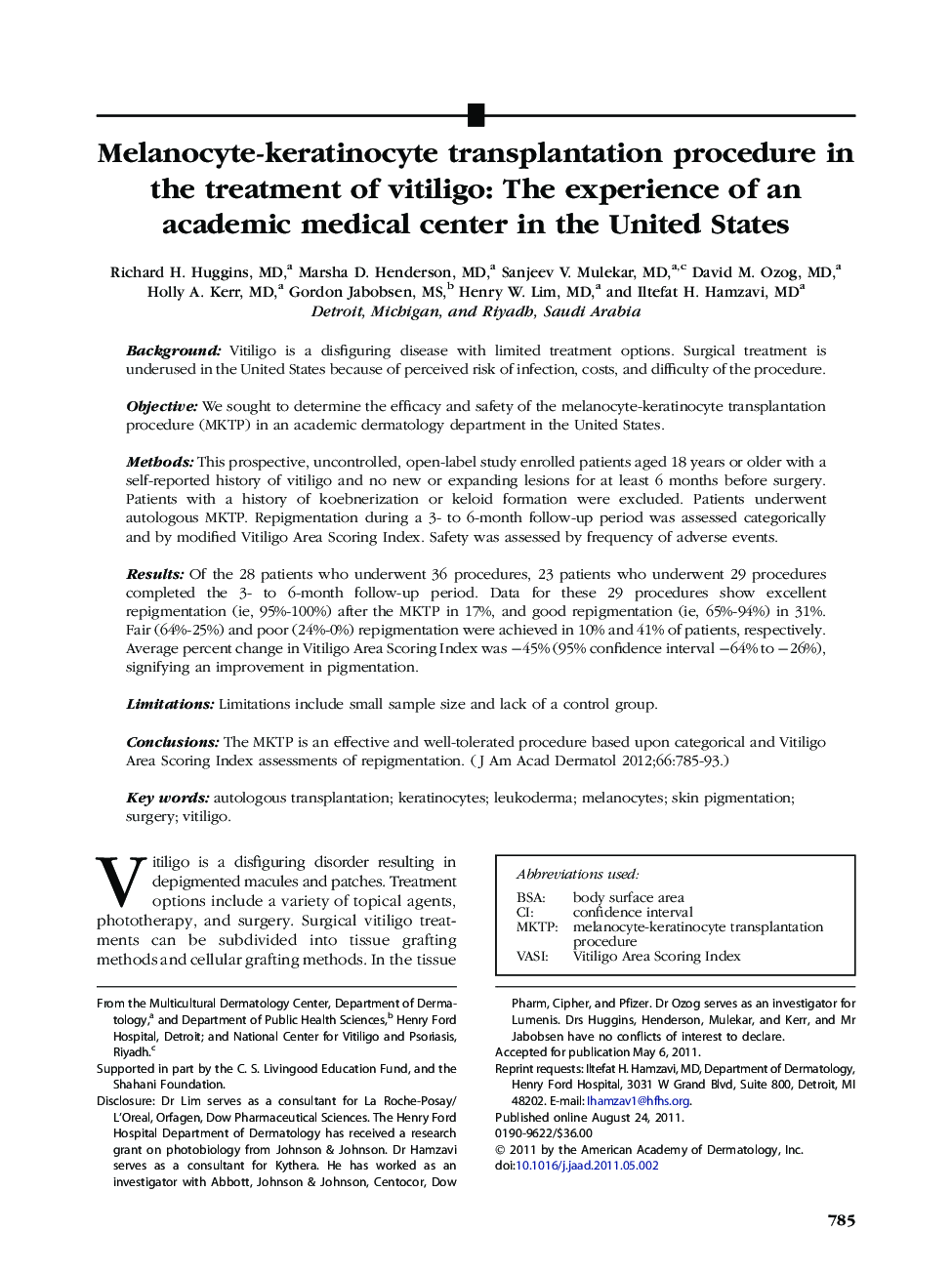| کد مقاله | کد نشریه | سال انتشار | مقاله انگلیسی | نسخه تمام متن |
|---|---|---|---|---|
| 3206697 | 1587565 | 2012 | 9 صفحه PDF | دانلود رایگان |

BackgroundVitiligo is a disfiguring disease with limited treatment options. Surgical treatment is underused in the United States because of perceived risk of infection, costs, and difficulty of the procedure.ObjectiveWe sought to determine the efficacy and safety of the melanocyte-keratinocyte transplantation procedure (MKTP) in an academic dermatology department in the United States.MethodsThis prospective, uncontrolled, open-label study enrolled patients aged 18 years or older with a self-reported history of vitiligo and no new or expanding lesions for at least 6 months before surgery. Patients with a history of koebnerization or keloid formation were excluded. Patients underwent autologous MKTP. Repigmentation during a 3- to 6-month follow-up period was assessed categorically and by modified Vitiligo Area Scoring Index. Safety was assessed by frequency of adverse events.ResultsOf the 28 patients who underwent 36 procedures, 23 patients who underwent 29 procedures completed the 3- to 6-month follow-up period. Data for these 29 procedures show excellent repigmentation (ie, 95%-100%) after the MKTP in 17%, and good repigmentation (ie, 65%-94%) in 31%. Fair (64%-25%) and poor (24%-0%) repigmentation were achieved in 10% and 41% of patients, respectively. Average percent change in Vitiligo Area Scoring Index was −45% (95% confidence interval −64% to −26%), signifying an improvement in pigmentation.LimitationsLimitations include small sample size and lack of a control group.ConclusionsThe MKTP is an effective and well-tolerated procedure based upon categorical and Vitiligo Area Scoring Index assessments of repigmentation.
Journal: Journal of the American Academy of Dermatology - Volume 66, Issue 5, May 2012, Pages 785–793